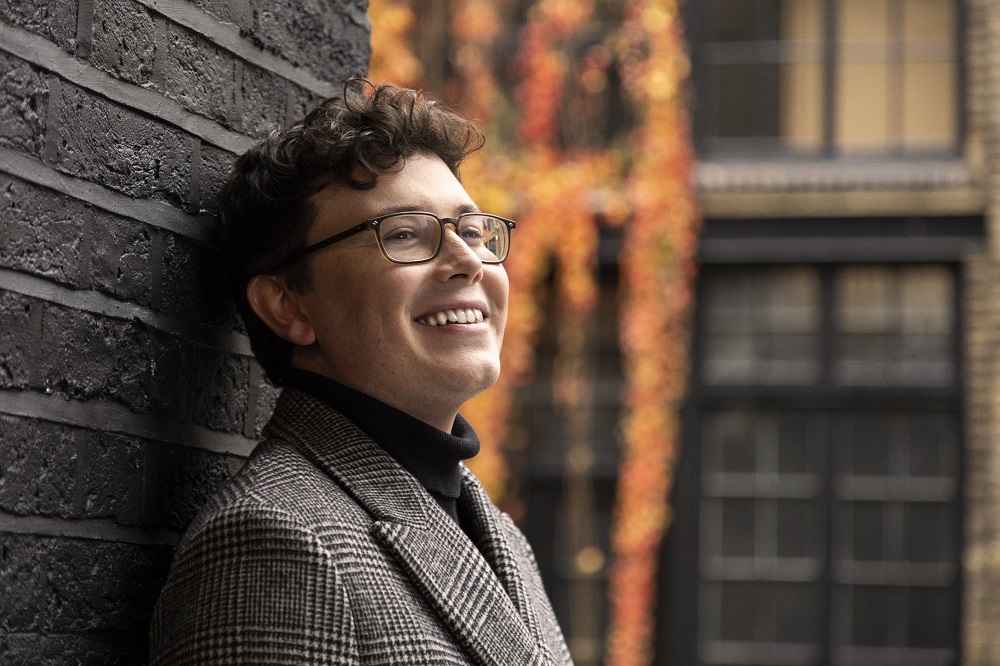Who could have imagined the table-turning controversy that might have cast doubt on the inclusion of works by Rachmaninov and Tchaikovsky when planning this programme?
Before raising the baton, Holly Mathieson expressed the hope that Russian music written before the current crisis would survive to be performed after it. Vociferous applause from the audience and bravo to the Association of British Orchestra and its members for their announcement of a measured approach and refusal to cancel Russian music. Let’s hope other arts institutions follow their cue.
Completed in 1940 and bearing little indication of its own war-torn times, Grace Williams’ Fantasia on Welsh Nursery Rhymes may have seemed a slightly incongruous companion for Rachmaninov’s Rhapsody on a Theme of Paganini and Tchaikovsky’s Symphony No.1 “Winter Daydreams”. Holly Mathieson coaxed a homespun charm as well as a strong element of the dance shared by all three works on the programme. Much influenced by the composer’s teacher Vaughan Williams, its contrast of brilliantly orchestrated genial high spirits and poignant melody cut a carefree dash to raise the spirits before the quicksilver wit and wintry sparkle of the two Russians.
Enter soloist Martin James Bartlett (pictured below by Paul Marc Mitchell) to raise the bar immediately with a scintillating and compelling Paganini Rhapsody. Ultra-flexible and tantalisingly unpredictable, he struck sparks off the mood and substance of each variation to generate a tingling sense of danger that matched Rachmaninov’s genius reworking of the Paganini theme at every twist and turn. Rarely can the soloist’s introduction of the Dies Irae in Variation 7 have resonated with such diversity of tone, inflection and chordal sensitivity. Similarly the rapt introspective musing of the piano’s solo announcement of the big theme of Variation 18, expectantly poised to give birth to one of the composer’s greatest thematic inspirations. The orchestra stuck to him like glue with equally bristling rapport, comprehensively reporting the composer’s leaner and meaner late orchestral palette in his greatest concertante work.  Bartlett’s encore of Liszt’s arrangement of Schumann’s “Widmung” was a breathtaking sleight of hands demonstrating how to gift-wrap a favourite melody in virtuoso flamboyance that prompted speculation about what subtleties Rachmaninov might have brought to the song had he made an arrangement of his own. No question however, the composer-pianist would have been hanging on every note of his Paganini masterpiece in the hands of this outstanding young pianist.
Bartlett’s encore of Liszt’s arrangement of Schumann’s “Widmung” was a breathtaking sleight of hands demonstrating how to gift-wrap a favourite melody in virtuoso flamboyance that prompted speculation about what subtleties Rachmaninov might have brought to the song had he made an arrangement of his own. No question however, the composer-pianist would have been hanging on every note of his Paganini masterpiece in the hands of this outstanding young pianist.
What a pleasure to hear Tchaikovsky’s still rarely performed First Symphony. Although it was a problem child for the composer, revised twice before publication, all four movements brim with an open-air freshness and memorable melodic invention stemming from Russian folksong and dance as music of the land, its people and culture. At times during the first and last movements, Tchaikovsky’s innovative introduction of greater lyrical freedom to symphonic form seemed constrained by undue seriousness of mood. Beating to the bar lines began to sap the longer drawn phrases of their smiling musical energy as though the inheritance was from Beethoven rather than Schubert and Mendelssohn.
Not so however with the two central movements, which present an impressionistic landscape of gloom and mist with an ear-catching aspirational folk melody of the composer’s own creation followed by a deftly playful scherzo with a trio section sporting the first of his irresistible symphonic waltzes. Both were beautifully contrasted and brought a sense of heartfelt longing combined with a celebration of uplifting rhythmic buoyancy at the core of the symphony. It was here that principal oboe Ian Hardwick shone with the most heartwarming and sensitive solo orchestral playing of the concert, holding the audience rapt as he spun the second movement Adagio’s long-drawn main theme to cantabile perfection. It was left to the finale to steam through to brass fanfares and rousing percussion to set a triumphant seal on the proceedings.














Add comment